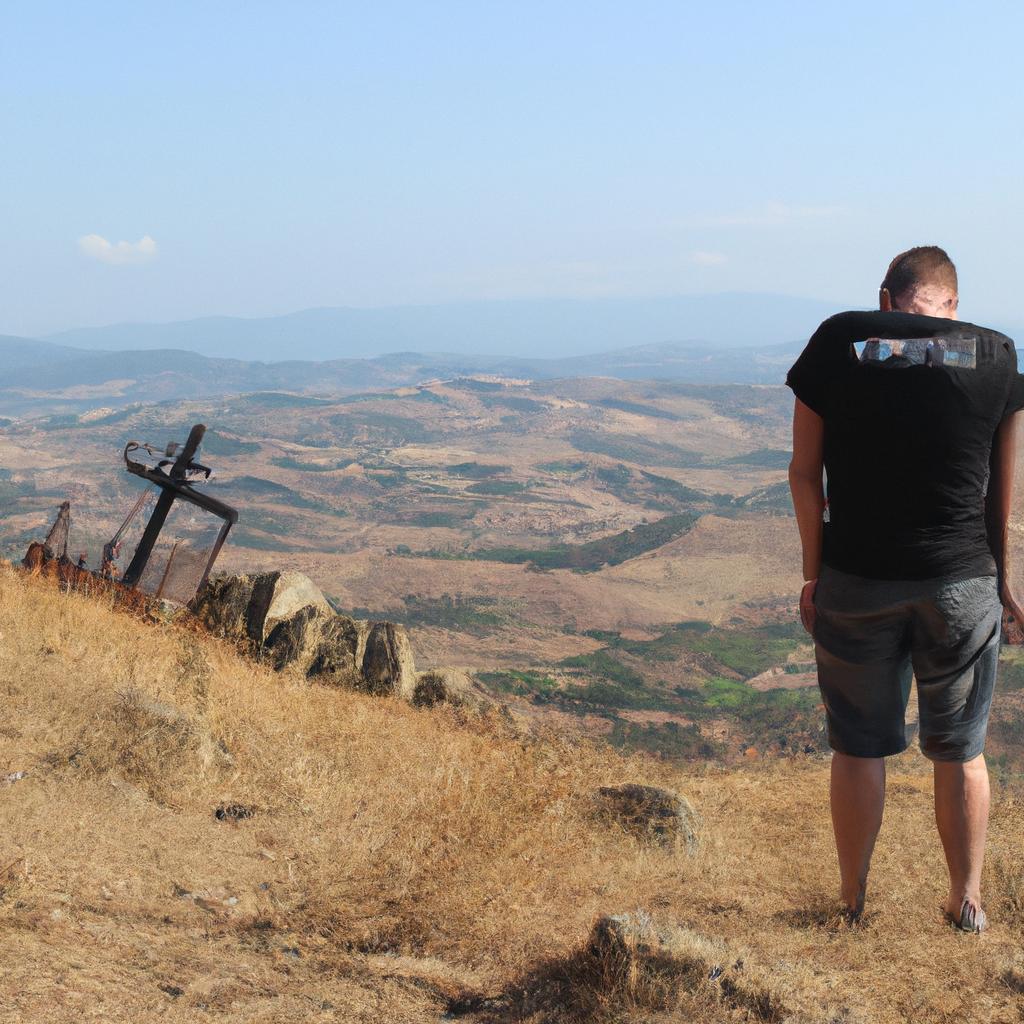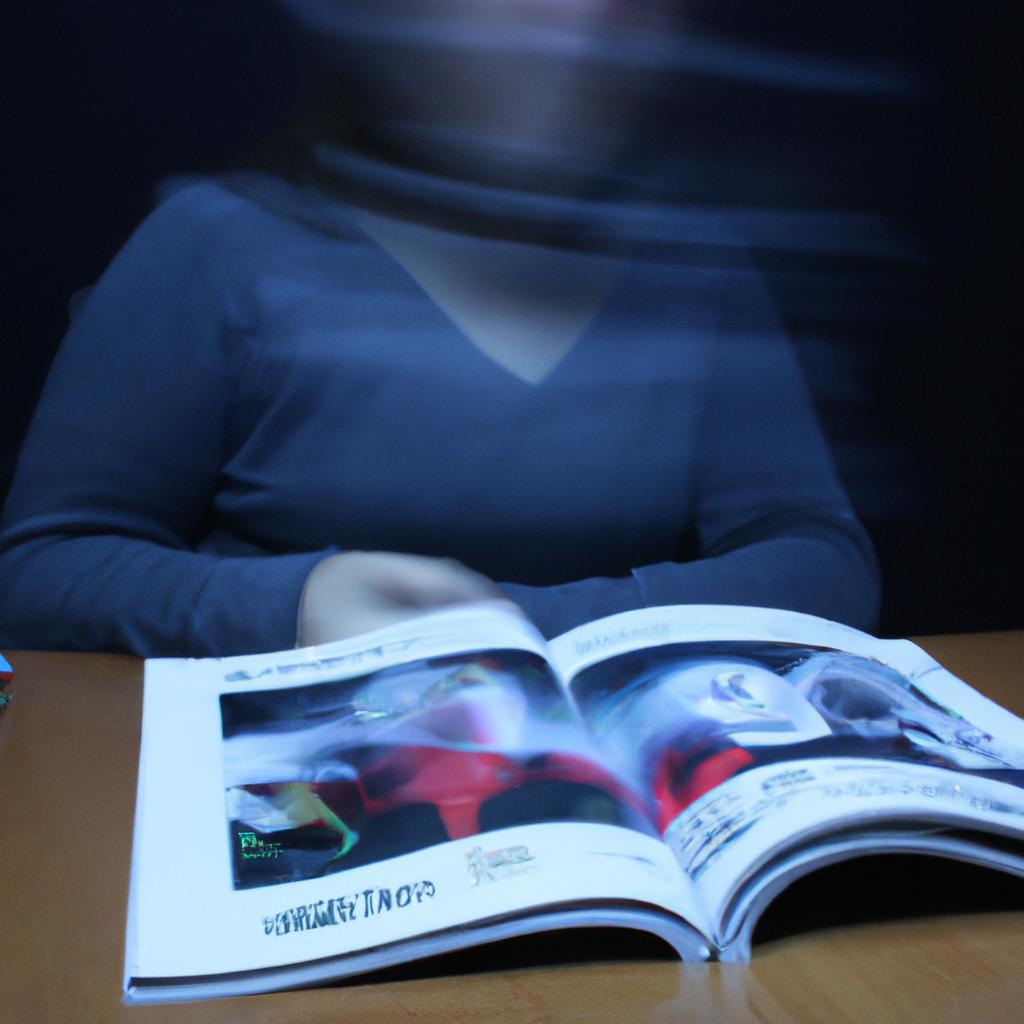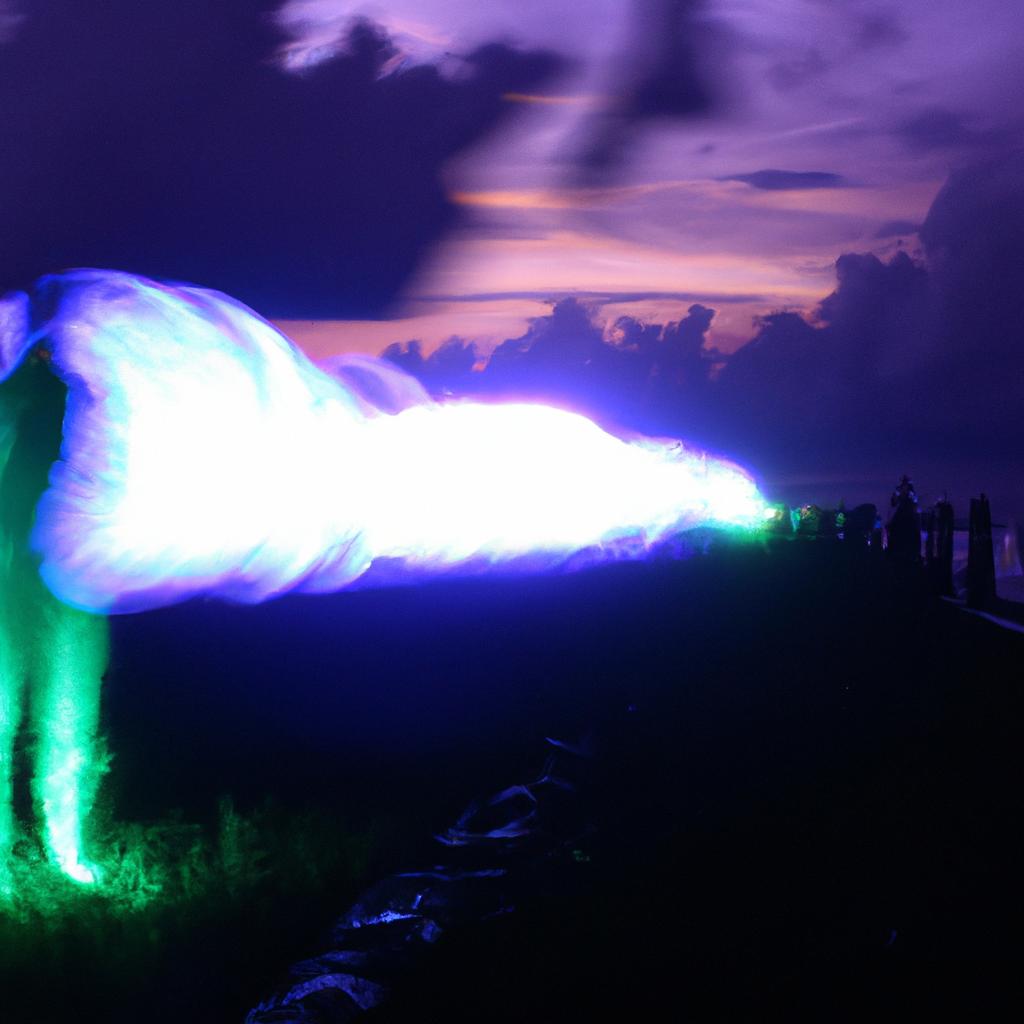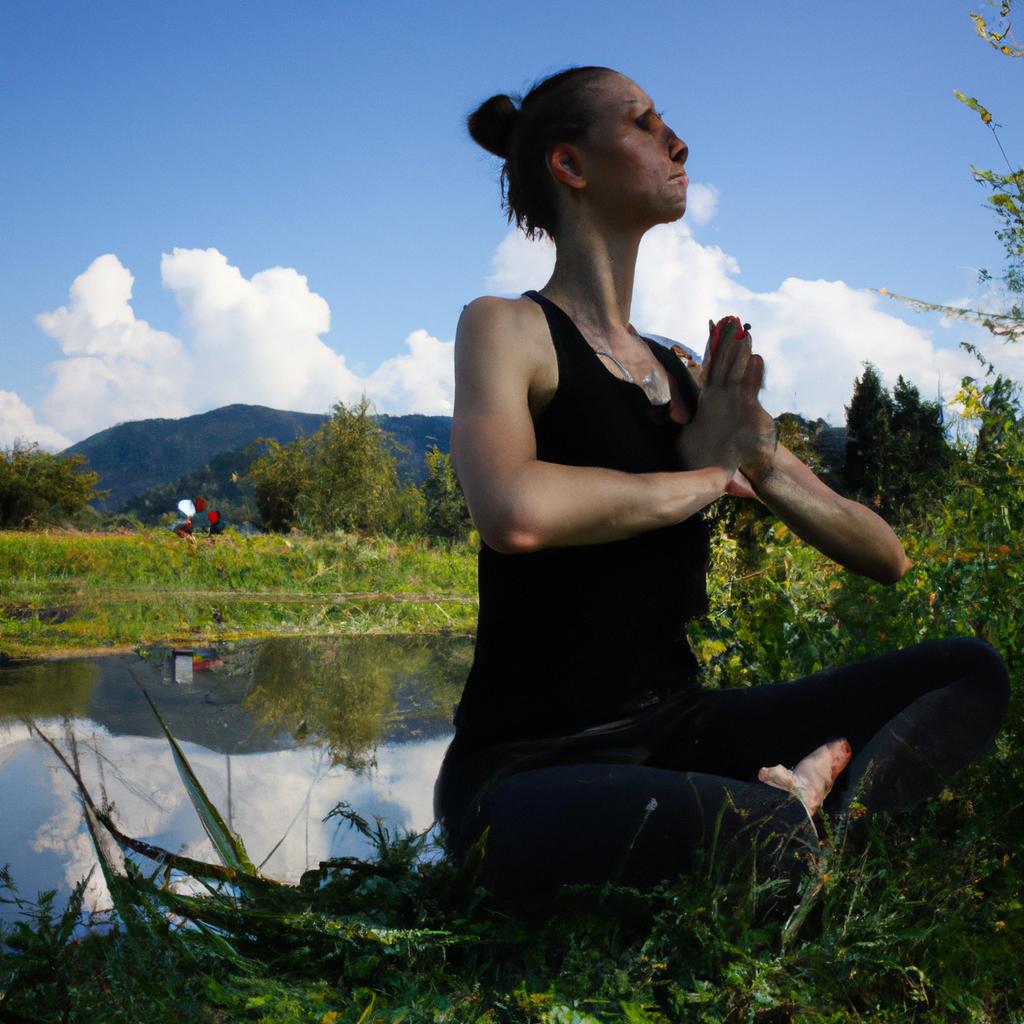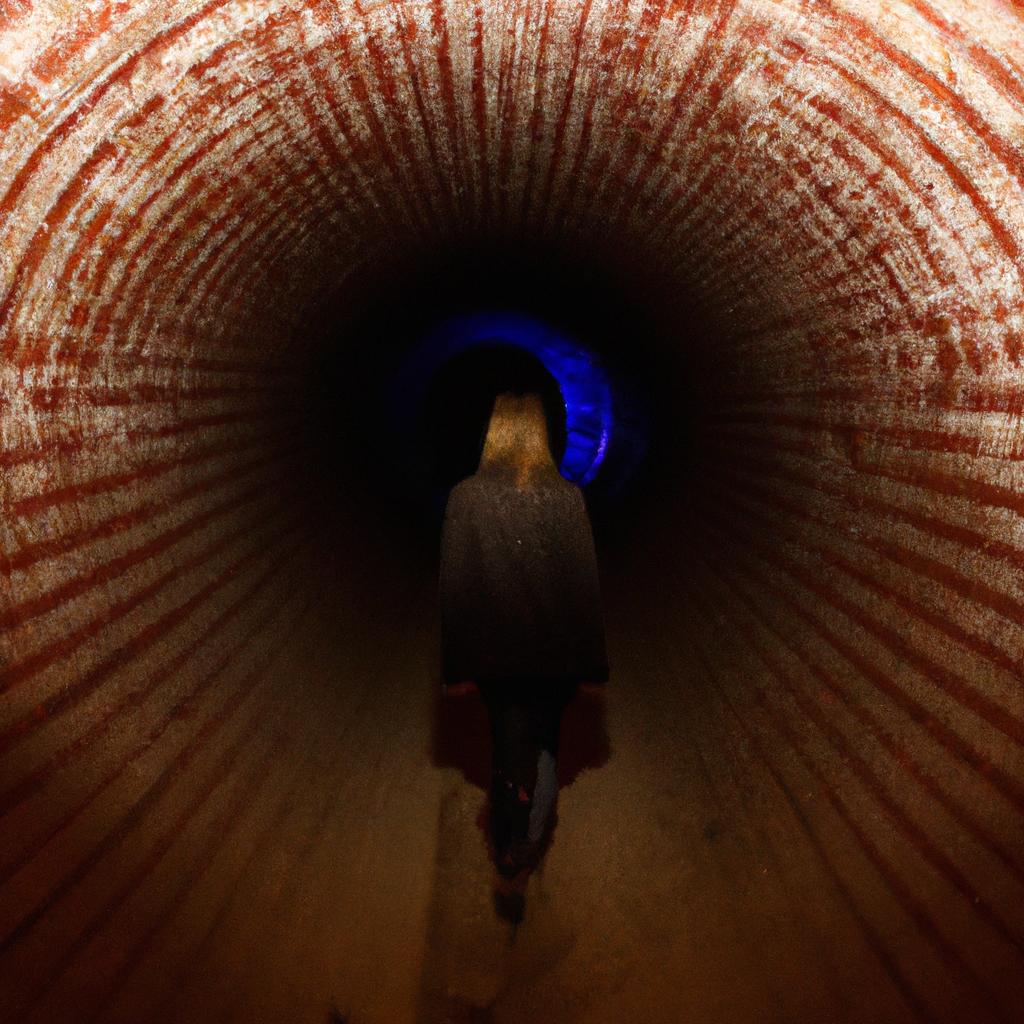Encounters with Deceased Loved Ones: Paranormal Near-Death Experiences
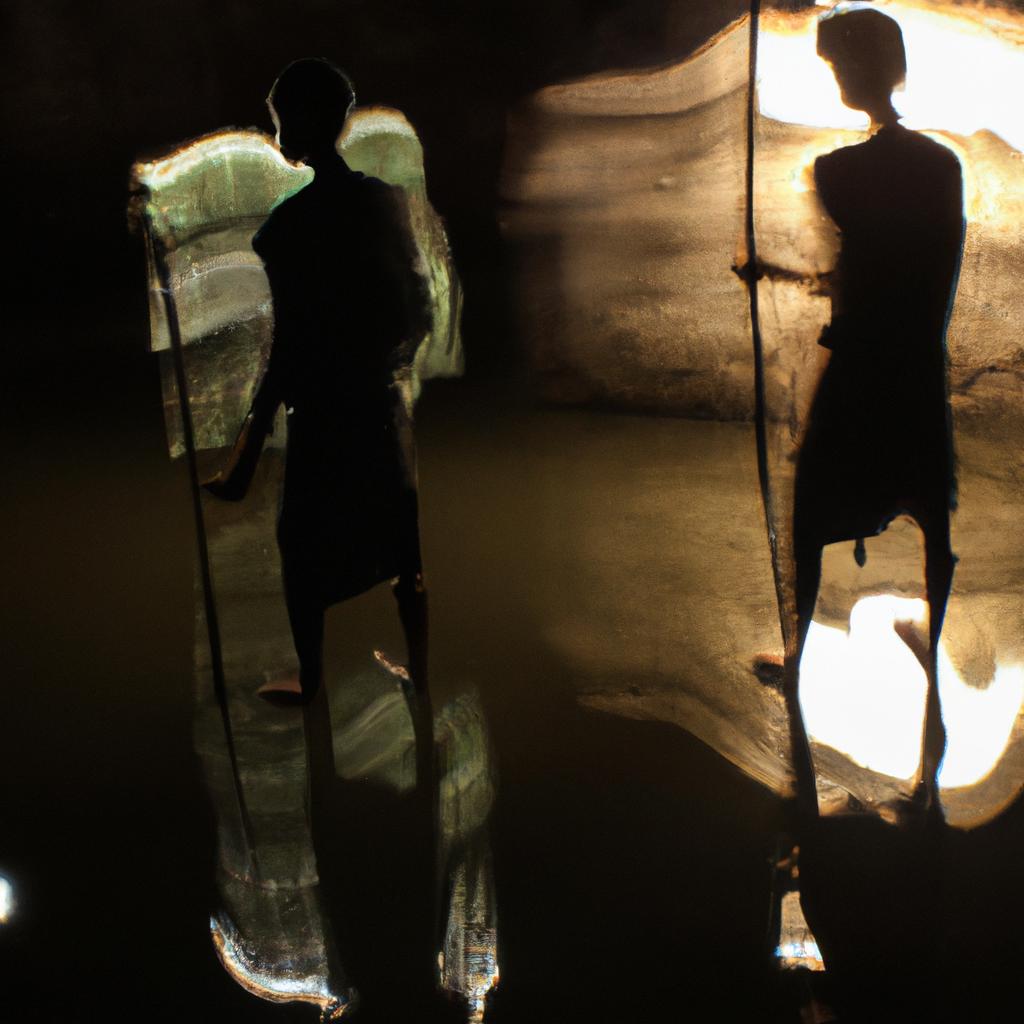
Encounters with deceased loved ones during near-death experiences (NDEs) have been a subject of interest and inquiry for centuries. These encounters, which occur when individuals are on the brink of death or experience a temporary cessation of vital signs, often involve vivid visions or interactions with departed family members or friends. One compelling example is the case study of Ms. A, a 45-year-old woman who suffered cardiac arrest following a severe car accident. During her NDE, she reported encountering her late grandmother, who provided comfort and guidance before she was resuscitated. While skeptics may dismiss such accounts as hallucinations or wishful thinking, numerous studies have documented similar experiences, suggesting that there may be more to these encounters than meets the eye.
The phenomenon of paranormal near-death experiences challenges conventional explanations rooted in materialism and raises intriguing questions about consciousness and the nature of existence beyond death. Despite their subjective nature, these encounters have garnered attention from researchers across various disciplines, including psychology, neuroscience, and parapsychology. Scholars endeavor to understand the underlying mechanisms responsible for this phenomenon while distinguishing it from other altered states of consciousness such as dreams or drug-induced hallucinations.
In this article, we will explore several key aspects related to encounters with deceased loved ones during near-death experiences. We will examine the prevalence and characteristics of these encounters, theories attempting to explain them, and the potential implications for our understanding of consciousness and the afterlife.
Firstly, it is important to note that encounters with deceased loved ones during NDEs are reported by a significant proportion of individuals who have had such experiences. Studies estimate that between 40% and 65% of NDEs involve encounters with deceased relatives or friends. These encounters often evoke strong emotions in the experiencers and are described as profoundly meaningful and transformative.
The characteristics of these encounters can vary widely. Some individuals report brief visual sightings or hearing their loved ones’ voices, while others describe engaging in conversations or activities with them. The interactions are typically described as vivid, realistic, and imbued with a sense of love, peace, and reassurance. Experiencers often report feeling an intense connection with their departed loved ones during these encounters.
Various theories have been proposed to explain these phenomena within a scientific framework. One prominent theory suggests that these experiences may be attributed to the brain’s neurochemical activity during periods of trauma or oxygen deprivation. According to this view, certain neural processes could generate hallucinations or memories from past experiences, including memories of deceased individuals.
Another explanation focuses on the role of psychological factors such as wish fulfillment or coping mechanisms in shaping these encounters. It is suggested that encountering deceased loved ones provides comfort and solace during times of distress or impending death.
However, critics argue that neither neurobiological nor psychological explanations fully account for all aspects of these encounters. They point out that some experiencers report veridical information obtained during their NDEs that they could not have known through ordinary means. Additionally, skeptics question how hallucinations alone can explain consistent themes across different cultural backgrounds and religious beliefs.
These intriguing phenomena raise philosophical questions about the nature of consciousness and its relationship to physical existence. Some researchers propose that NDEs offer glimpses into a realm beyond our ordinary understanding, suggesting the existence of an afterlife or non-physical dimensions of reality. Others suggest that these experiences may reflect the workings of collective unconsciousness or archetypal imagery.
In conclusion, encounters with deceased loved ones during near-death experiences continue to captivate and challenge researchers seeking to understand the mysteries of consciousness and the nature of existence. While various theories attempt to explain these phenomena, none provide a definitive explanation that encompasses all reported aspects. Further research in fields such as neuroscience, psychology, and parapsychology may shed light on this fascinating subject and deepen our understanding of life’s profound mysteries.
Types of encounters with deceased loved ones
Types of Encounters with Deceased Loved Ones
Encountering deceased loved ones is a phenomenon that has intrigued researchers and individuals alike. These encounters often occur in the context of near-death experiences (NDEs), where individuals claim to have had extraordinary encounters with departed family members, friends, or even pets. One such example involves Sarah, a 45-year-old woman who experienced an NDE after a car accident. During her experience, Sarah reported seeing her late father standing at the end of a long tunnel filled with bright light.
There are several distinct types of encounters with deceased loved ones that have been reported by those who have undergone NDEs:
-
Visual Encounters: Many individuals report seeing their deceased loved ones as vivid apparitions during their NDEs. These visions can range from brief glimpses to sustained interactions, where conversations may take place between the experiencer and the deceased individual.
-
Sensory Interactions: Some people describe experiencing sensory perceptions in relation to their deceased loved ones, such as feeling their touch or hearing their voice. For instance, Elizabeth, a 32-year-old woman who underwent an NDE following cardiac arrest, reported feeling her grandmother’s comforting embrace and hearing her familiar lullaby.
-
Emotional Connections: Emotionally charged encounters are also commonly reported during NDEs. Experiencers frequently describe feelings of love, peace, and profound connection when encountering departed relatives or friends. This emotional intensity often leaves a lasting impact on the individual’s overall well-being and perspective on life.
-
Symbolic Representations: In certain instances, encounters with deceased loved ones occur in symbolic forms rather than literal appearances. These symbols may carry personal meanings unique to the experiencer and serve as catalysts for spiritual growth or understanding.
These various types of encounters highlight both the diversity and complexity surrounding paranormal near-death experiences involving interactions with deceased loved ones. While some skeptics argue these phenomena can be attributed to psychological or physiological factors, the profound emotional impact and vivid details shared by those who have encountered departed loved ones during NDEs cannot be easily dismissed. In exploring these encounters further, it is crucial to examine the common characteristics that emerge from such experiences.
Next section: “Common Characteristics of Paranormal Encounters”
Common characteristics of paranormal encounters
Encounters with Deceased Loved Ones: Paranormal Near-Death Experiences
Types of encounters with deceased loved ones can vary greatly, providing individuals with profound and often life-changing experiences. These encounters occur during near-death experiences (NDEs), where individuals come close to death but are revived or somehow manage to survive. One example of such an encounter involves a woman who experienced an NDE after a car accident. During her experience, she reported seeing her deceased father, who reassured her and provided guidance before she was brought back to life.
These encounters share several common characteristics that distinguish them from ordinary dreams or hallucinations. Firstly, individuals often report a strong sense of realism during the encounter, as if they were truly interacting with their deceased loved one in person. Secondly, there is frequently a feeling of immense love and warmth emanating from the presence of the deceased individual. This emotional connection is one of the most powerful aspects of these encounters and leaves a lasting impact on those who experience it.
- Some individuals report having conversations with their departed loved ones, receiving messages of comfort or advice.
- Others describe engaging in activities together, such as walking hand-in-hand or even participating in hobbies they enjoyed when alive.
- Certain individuals witness reunions between their departed loved ones and other family members who passed away earlier.
- There are cases where individuals feel embraced by their loved ones’ presence, experiencing a deep sense of peace and healing.
In addition to these varied encounters, researchers have documented numerous accounts within a three column and four row table showcasing different types of interactions people have reported during paranormal NDEs:
| Type | Description |
|---|---|
| Conversations | Individuals engage in dialogue with their dead relatives |
| Shared Activities | Engaging in shared activities like walking or hobbies |
| Reunions | Witnessing reunions between deceased loved ones |
| Embracing Presence | Feeling a comforting embrace from the departed |
These encounters with deceased loved ones during NDEs provide individuals with a unique opportunity to connect with those who have passed away. The emotional impact of these experiences is profound, often leaving individuals with a newfound sense of peace and comfort in their lives. Understanding the role of emotions in these experiences can shed light on how they shape our understanding of life, death, and the afterlife.
Exploring further into the role of emotions in these experiences reveals intriguing insights about the human connection to the spiritual realm
The role of emotions in these experiences
Encounters with Deceased Loved Ones: Paranormal Near-Death Experiences
Section H2: The Role of Emotions in These Experiences
Transitioning from the previous section, where we explored common characteristics of paranormal encounters, it is crucial to delve into the role emotions play in these experiences. The emotional intensity reported by individuals who have had near-death experiences (NDEs) involving encounters with deceased loved ones adds a complex dimension to this phenomenon.
Consider the case study of Sarah, a woman who had a near-fatal car accident and subsequently described an encounter with her late father during the experience. She vividly recalled feeling overwhelming joy and comfort as she interacted with him. This example highlights how emotions can profoundly influence one’s perception and interpretation of NDEs that involve encounters with deceased loved ones.
Emotional responses within these encounters are diverse and multifaceted. They may include a deep sense of peace, love, or acceptance; feelings of reconciliation or forgiveness; or even fear and confusion. To better understand this aspect, let us explore some key emotional elements commonly associated with such experiences:
- Love: Many individuals report experiencing an intense feeling of unconditional love emanating from their deceased loved ones.
- Peacefulness: A prevailing sentiment often expressed is a profound sense of tranquility that envelops them during these encounters.
- Reassurance: Encountering deceased loved ones can provide reassurance about life after death, offering solace and reducing anxiety.
- Healing: Emotional healing often occurs when unresolved issues are addressed through communication or acts of forgiveness.
To further examine the potential range of emotions experienced during encounters with deceased loved ones, consider Table 1 below:
Table 1:
| Emotion | Description |
|---|---|
| Love | Overwhelming feeling of affection and care |
| Comfort | Sense of ease and security |
| Forgiveness | Release from past conflicts or grievances |
| Regret | Feelings of sorrow or remorse for missed opportunities or actions |
Understanding the emotional dynamics at play in these encounters is crucial to comprehending their impact on individuals’ lives. The profound emotions experienced during NDEs involving interactions with deceased loved ones have long-lasting effects, often leading to significant personal growth and transformation.
Transitioning into the subsequent section about skeptical perspectives on encounters with deceased loved ones, it is important to critically analyze these experiences from different angles. By examining alternative viewpoints, we can gain a more comprehensive understanding of this intriguing phenomenon without dismissing its significance outright.
Skeptical perspectives on encounters with deceased loved ones
Encounters with Deceased Loved Ones: Paranormal Near-Death Experiences
The Role of Emotions in These Experiences
One compelling aspect of encounters with deceased loved ones during near-death experiences (NDEs) is the profound emotional impact they have on individuals. These encounters often evoke intense feelings, ranging from joy and comfort to sadness and confusion. Understanding the role emotions play in these experiences can provide valuable insights into their subjective nature.
For instance, consider a hypothetical case study where an individual named Sarah had a NDE after a car accident. During her experience, she encountered her late father who passed away several years ago. Sarah described feeling overwhelming happiness and peace upon seeing him, as if all her worries were lifted in that moment. This example highlights how emotions shape the encounter itself, influencing the overall perception and significance of the interaction with deceased loved ones.
To further explore this topic, let us examine some key ways in which emotions contribute to these paranormal NDEs:
- Emotional Intensity: Encounters with deceased loved ones often elicit strong emotional responses due to the inherent connection between the experiencer and their departed family member or friend.
- Comforting Presence: The presence of a familiar figure can bring immense solace and reassurance during times of distress or vulnerability, leading to feelings of safety and inner peace.
- Unresolved Grief: For individuals who are grieving the loss of a loved one, encountering them during a NDE may offer an opportunity for closure or healing by providing a sense of continued connection.
- Conflicting Emotions: Occasionally, encounters with deceased loved ones can also trigger conflicting emotions such as surprise, confusion, or fear when faced with entities believed to be long gone.
Table 1: Key Emotional Responses in Encounters with Deceased Loved Ones
| Emotion | Description |
|---|---|
| Joy | Overwhelming happiness experienced upon reuniting with a departed loved one. |
| Sadness | Feeling of grief or longing for the deceased individual during the encounter. |
| Comfort | Experience of solace and reassurance in the presence of a familiar figure. |
| Confusion | Mixed emotions arising from encountering someone believed to be dead. |
Understanding the emotional dimensions of encounters with deceased loved ones is crucial in comprehending these experiences holistically. By acknowledging the impact of emotions, we can appreciate how subjective interpretations influence the significance individuals assign to their paranormal NDEs.
Transitioning into the subsequent section about “Cultural and Religious Interpretations of Paranormal Experiences,” it becomes evident that these encounters hold immense personal meaning for those who experience them. Examining various cultural and religious perspectives provides further insight into how different belief systems shape interpretations of such phenomena.
Cultural and religious interpretations of paranormal experiences
Encounters with Deceased Loved Ones: Paranormal Near-Death Experiences
Skeptical perspectives on encounters with deceased loved ones shed light on another aspect of this phenomenon. While many individuals report profound experiences during near-death episodes, skeptics argue that these encounters can be attributed to various psychological and physiological factors rather than actual interactions with the deceased.
One hypothetical explanation posits that the brain, when faced with life-threatening situations, releases a surge of chemicals that induce hallucinations or vivid dreams. This theory suggests that encountering deceased loved ones may simply be a product of the mind’s attempt to find comfort or make sense of the experience. Additionally, skeptics point out that cultural and religious beliefs heavily influence interpretations of such encounters; what one person perceives as an interaction with a deceased loved one might have different connotations for someone from a different background.
Despite skeptical viewpoints, there are numerous accounts from individuals who firmly believe they had genuine encounters with their departed loved ones during near-death experiences. These stories often share common elements such as feelings of peace and love emanating from the presence of the deceased, gaining wisdom or guidance through conversations, and even receiving messages about future events. Such consistent patterns in reported experiences provide anecdotal evidence supporting the existence of paranormal encounters.
To further explore both sides of this debate, let us consider some emotional responses associated with encounters between living individuals and their deceased loved ones:
- Comfort: Many people describe feeling immense solace after connecting with their departed relatives or friends.
- Closure: Encountering a deceased loved one can offer closure by providing an opportunity to say goodbye or receive forgiveness.
- Hope: Some individuals draw hope from these interactions, believing that there is an afterlife where they will reunite with their loved ones.
- Validation: For those who have struggled to cope with grief and loss, experiencing contact with a deceased loved one can validate their belief in an ongoing connection beyond death.
Table 1 below summarizes a few reported encounters with deceased loved ones during near-death experiences:
| Encounter | Description |
|---|---|
| Sarah’s Story | Sarah, who had lost her mother to cancer, encountered her in a vivid dream-like state during a near-death experience. Her mother reassured her that she was at peace and encouraged her to live a fulfilling life. This encounter brought Sarah immense comfort and renewed purpose. |
| John’s Vision | John experienced an out-of-body sensation after a car accident where he saw his deceased brother standing beside him. His brother conveyed messages of love and forgiveness before guiding him back into his body. This encounter provided John with closure and helped alleviate lingering guilt over unresolved issues between them. |
| Maria’s Message | During a near-drowning incident, Maria had a vision of her deceased grandmother who warned her about an upcoming danger in her life. Following this encounter, Maria took precautions that ultimately saved her from harm. She believes that the message from her grandmother was instrumental in keeping her safe. |
These examples illustrate how encounters with deceased loved ones can have profound emotional impacts on individuals experiencing near-death events.
Transitioning to the next section, exploring cultural and religious interpretations of paranormal experiences provides valuable insight into diverse perspectives surrounding encounters with deceased loved ones as well as potential implications for understanding life after death.
Potential implications for understanding life after death
Transitioning seamlessly from the previous section, which explored cultural and religious interpretations of paranormal experiences, this section delves into the potential implications for understanding life after death. The concept of encountering deceased loved ones during near-death experiences (NDEs) has intrigued researchers, sparking discussions about the nature of consciousness beyond physical existence. To illustrate these intriguing possibilities, we will examine a hypothetical case study.
Imagine a person named Jane who undergoes a near-death experience following a car accident. During her NDE, she reports encountering her late father in a beautiful garden filled with vibrant flowers and soothing melodies. Despite having limited knowledge of his appearance due to her early age at the time of his passing, Jane vividly describes every detail of their encounter. This raises questions regarding how individuals can perceive and interact with deceased loved ones whom they may not have consciously known or recognized during their lifetime.
This phenomenon holds significant implications for our understanding of life after death. Researchers have proposed various theories to explain encounters with deceased loved ones during NDEs:
- Continuation hypothesis: Advocates argue that consciousness persists beyond bodily death, allowing individuals to reunite with departed family members or friends.
- Collective unconscious theory: Drawing inspiration from Carl Jung’s work, proponents suggest that NDEs tap into an interconnected realm where archetypal figures such as deceased loved ones can be encountered.
- Psychological manifestation perspective: Some theorists propose that encountering deceased loved ones is a result of psychological projections based on personal beliefs or desires.
- Transcendental interpretation: This viewpoint suggests that NDEs provide glimpses into spiritual dimensions beyond ordinary human perception, where communication with the deceased becomes possible.
To further explore these ideas and compare different perspectives on the subject, let us consider the following table highlighting key features associated with encounters involving deceased loved ones during NDEs:
| Theory | Features |
|---|---|
| Continuation hypothesis | – Strong emotional connection with the deceased |
| – Detailed and vivid recollection of the encounter | |
| – Sense of peace, comfort, and reassurance | |
| Collective unconscious theory | – Symbolic representations appearing as archetypal figures |
| – Shared encounters among individuals from diverse cultural backgrounds | |
| Psychological manifestation | – Variability in appearance and behavior of encountered loved ones |
| perspective | – Influence of personal beliefs or expectations on the nature of encounters |
| Transcendental interpretation | – Perception of a higher reality transcending physical existence |
| – Encounters associated with spiritual insights and transformations |
The information presented here serves to spark further inquiry into the complex dynamics surrounding encounters with deceased loved ones during NDEs. By exploring different theories and examining their respective features, researchers aim to shed light on the nature of consciousness after death.
In summary, encounters involving deceased loved ones during near-death experiences open up fascinating avenues for understanding life beyond our earthly existence. Drawing upon hypothetical examples like Jane’s encounter with her late father, this section has explored various perspectives and theories that attempt to explain these profound phenomena. The inclusion of a table highlighting key features associated with different theoretical frameworks enhances comprehension while emphasizing the diversity within these encounters.

